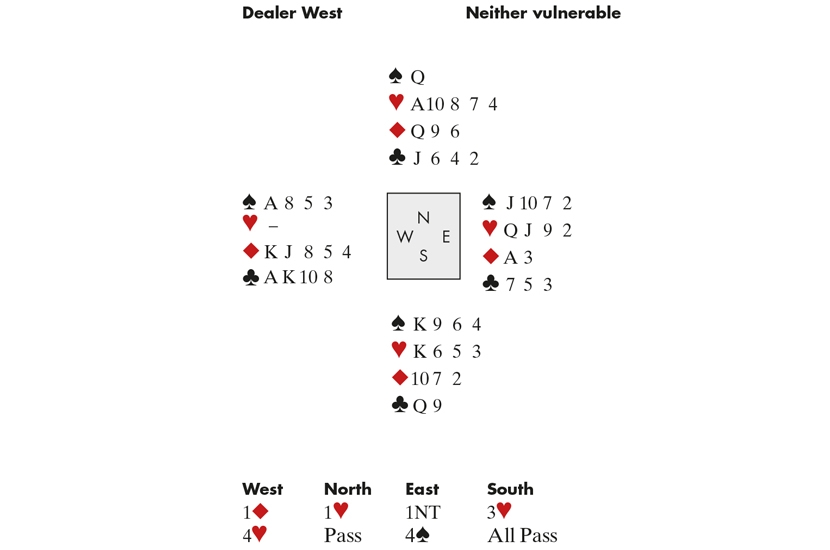When lockdown began, all those months ago, I remember chatting to a few of England’s top players about the shift to online bridge. They were dubious, to say the least. They didn’t really enjoy it; nor did they think they were much good at it. Other experts shared their concerns. The inferences and clues they picked up face-to-face — their ‘table presence’ — were such a big part of their game; how could online bridge be anything but a pale imitation of the real thing?
Roll on a year, and their fears have largely been allayed. The great players have found their form. They can still ‘read’ their opponents and get a feel for the cards; they can be as dazzling onscreen as they are in the flesh. This hand, played by the young American Adam Grossack in a recent ‘Alt’ invitational tournament, is an example of online prowess at its best.
West’s 4♥ asked his partner to choose a contract. South (Andrew Black) led the ♥3, and Grossack didn’t ruff: he pitched a club. North (David Gold) won with the ♥A and played the ♠Q, ducked by Grossack. North switched to the ♣2, to partner’s ♣Q and dummy’s ♣A. Grossack played a diamond to the ace, one back to the king, and ruffed a diamond. Next came the ♠J to South’s ♠K and his ♠A. He then played a spade to the ♠10, and the ♥J, covered by South and ruffed with his last trump. Grossack cashed the ♣K and played the J◆. South could do nothing but ruff and play a heart into declarer’s ♥Q9.








Comments
Join the debate for just £1 a month
Be part of the conversation with other Spectator readers by getting your first three months for £3.
UNLOCK ACCESS Just £1 a monthAlready a subscriber? Log in